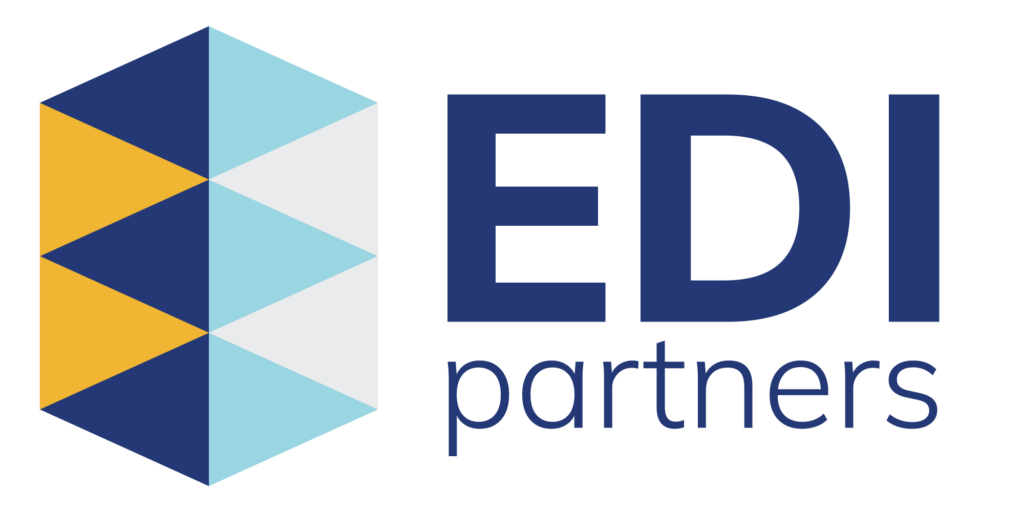EDI – or Electronic Data Interchange – is widely used by many businesses today to create standards for business communications and transaction data. Industries with complex supply chains or regulatory requirements benefit greatly from the implementation of EDI solutions. EDI has been around since the 1960s, but it became more widespread only in the 1980s with the introduction of standardized formats for data exchange.
During the 1990s, EDI became critical to supply chain management, and its application allowed businesses to exchange vital information quickly and efficiently. The integration of web-based technologies and the internet made it easier for even medium enterprises and small businesses to participate. Advances in computing technology and faster internet speeds in recent years have led to improvements in EDI standards and industry best practices.
In this article, we’ll cover the basics of EDI standards and how they facilitate the exchange of business documents between different companies or trading partners in a consistent, efficient, and reliable manner. We will also list down some common EDI standards used around the world.
Introduction to EDI
Electronic Data Exchange (EDI) is a method of exchanging business documents electronically between different companies or trading partners in a standardized format. EDI replaces traditional paper-based documents such as purchase orders, invoices, and shipping notices with electronic equivalents that can be transmitted between computer systems.
The exchange takes place in a standardized format, which allows companies to automate and streamline their business processes. As a result, the need for manual data entry and paper transactions is drastically reduced. Instead of manually exchanging documents, data is sent directly between computer systems, which increases efficiency and accuracy while reducing processing time and errors. EDI is widely used across various industries, from retail and manufacturing to healthcare and finance, and can benefit businesses of all sizes.
How Does EDI Work?
The EDI process typically begins with a sender creating an electronic document using their internal software or an EDI service provider. The document is then formatted in compliance with a specific EDI standard, such as ANSI X12 or UN/EDIFACT. The document is later transmitted to the recipient’s computer system through a secure communication channel, such as AS2 or SFTP.
Upon receiving the document, the recipient’s computer system uses software to translate the document from the EDI format into a format that can be read by the recipient’s internal systems. The data can then be automatically processed, eliminating the need for manual data entry. Once the recipient has processed the document, they may respond with their electronic documents, such as an invoice or a shipping notice. The process is then repeated in reverse, with the sender receiving and processing the recipient’s document.
What are EDI Standards and Why are they Important?
Electronic Data Interchange (EDI) standards are a set of guidelines and protocols used to format and transmit electronic documents between commercial entities. The format is required to be compatible with computer systems or software used by business entities. The most widely used EDI standards are ANSI X12 and EDIFACT, which are used in many industries around the world.
EDI standards are important for several reasons.
1. Consistency
EDI standards primarily enable businesses to exchange electronic documents in a consistent, uniform format. The formats allow quick data transfer for all transactional requirements while minimizing the potential for errors. Standardized data transfer like this leads to increased efficiency and productivity for each business involved, as well as improved accuracy and reliability of data. Additionally, EDI standards allow for seamless communication between the computer systems they are using, independent of their location.
2. Interoperability
Another benefit of EDI standards is that they promote interoperability between computer systems and software applications. Most businesses use different software packages to document their transactions, often with customizations tailored to their local business models. By working with a common set of standards, businesses can integrate their internal systems with the systems of their trading partners. Therefore, EDI standards help to streamline communication between businesses in different commercial ecosystems.
3. Regulatory Compliance
EDI standards are important for compliance with regulations and industry standards. Many industries have specific rules that dictate the documentation and trading processes. Different jurisdictions also have local taxation laws that further complicate compliance issues. For some businesses, EDI might not be an option, as it would mean falling behind in compliance.
ANSI X12: The Most Common EDI Standard in North America
ANSI X12 was developed by the American National Standards Institute (ANSI) in 1979 and is maintained by the Accredited Standards Committee (ASC) X12. ANSI X12 is the most widely used EDI standard in the US and Canada today.
ANSI X12 defines the overall structure and content of various types of electronic documents, including purchase orders, invoices, and receipts. Each document is assigned a unique identifier, called a transaction set. The document types are grouped into different categories based on their function, such as finance, government, or transportation. Some of the most commonly used X12 document types include the 810 Invoice, the 850 Purchase Order, and the 856 Advance Shipping Notice.
Without going into the technical details, an ANSI X12 document is a text file that contains a series of hierarchical segments, each with a unique segment identifier and a defined number of data elements. The data elements are separated by specific characters, such as the asterisk (*) or the tilde (~). The segments are separated by a carriage return and line feed (CRLF) character sequence that allows the software to understand the end of a line (including a line item in a document).
There are more than 350 ANSI X12 transaction sets that are used across 5 industries:
- X12C: Communications and Controls
- X12F: Finance
- X12I: Transportation
- X12M: Supply Chain
- X12N: Insurance
Advantages of ANSI X12 include its well-defined structure and content of electronic documents, which allows for efficient and accurate processing of data. It also provides a common standard for businesses to communicate with one another. However, ANSI X12’s complexity can require significant resources and expertise to implement and maintain. It also may not be as flexible or adaptable to changing business needs as some other electronic data interchange (EDI) standards.
EDIFACT: The Global EDI Standard Used by Many Industries
EDIFACT (Electronic Data Interchange for Administration, Commerce, and Transport) is an international EDI standard introduced by the United Nations Economic Commission for Europe (UNECE) to facilitate the exchange of business documents between organizations. EDIFACT is widely used outside North America, particularly in Europe and Asia. EDIFACT uses a different syntax than ANSI X12, with different rules for creating and transmitting messages. EDIFACT also includes a broader range of message types and segments that allow users to add optional fields. This diversity makes it more versatile and useful in certain industries like customs and healthcare.
The complete list of EDIFACT codes includes 93 document types, each represented by a 6-letter identifier. One advantage of EDIFACT is its global acceptance and adoption, which allows for standardized communication across borders and industries. However, it may not be as widely used or supported in specific regions or industries in comparison to other EDI standards.
Beyond ANSI X12 and EDIFACT: Other Commonly Used EDI Standards
There are several EDI formats used in different industries. Some of the contemporary formats use XML-based formats instead of text files. These can be more complex to implement due to the high level of document controls. However, they offer an increased level of industrial compliance.
TRADACOMS
TRADACOMS (Trading Data Communication) is a UK-based EDI standard developed by the UK Article Numbering Association (UKAN). It is primarily used in the retail industry, and specifically, the book industry.
VDA
VDA (Verband der Automobilindustrie) is a German EDI standard that was developed in the 1980s by the German Automotive Industry Association. It is commonly used in the automotive industry and supports business transactions, such as delivery schedules, invoices, and customs documents.
HL7
HL7 (Health Level Seven) is a US-based EDI standard that was developed in the 1980s by the Health Level Seven International organization. It is used in the healthcare industry and supports a range of business transactions, such as patient admissions, laboratory results, and insurance claims. HL7 messages are typically transmitted using a structured text format with data elements represented as fields in a table. Since the introduction of the Health Insurance Portability and Accountability Act of 1996 (HIPAA), EDI for healthcare businesses needs to conform to HIPAA standards to protect the privacy of patient information.
RosettaNet
RosettaNet is a global EDI standard developed in the late 1990s by a consortium of high-tech companies, including IBM, Microsoft, and Intel. It is used primarily in the high-tech industry and supports documents for supply chains, like inventory status updates, product and material details, and product forecasts. RosettaNet messages are sent in XML format.
Trademark EDI
Trademark EDI is a US-based EDI standard developed by the National Retail Federation (NRF) and the Uniform Code Council (UCC). It is used primarily in the retail industry. Trademark EDI messages, like TRADACOMS, are typically transmitted in plain text format with delimiters.
GS1
GS1 is an EDI format introduced by GS1, a global organization that develops and maintains standards for business communication. It is an XML-based format that can be easily integrated with supply chain systems across many industries. GS1 EDI has unique identifiers for products, parties, shipping containers, and locations, making it ideal for companies that need visibility and traceability for their inventory and transactions.

The Role of EDI Standards in Modern Business
EDI standards are crucial for modern business operations. They promote interoperability, reduce errors, increase transaction speed, and ensure compliance with regulations and standards. The right EDI standard depends on the industry and the preferences of individual businesses. When selecting and implementing an EDI standard, a company should carefully consider which EDI standards are most appropriate for their industry and trading partners.
Headquartered in Richmond, Virginia, EDI Partners services customers in all industry verticals across the United States to help them maximize the value of EDI. For nearly 30 years, we have helped organizations grow through seamless, end-to-end management of their EDI operations.
- How EDI Boosts Real-Time Inventory Management for 3PLs - April 29, 2025
- What Are EDI Payments? A Complete Guide to Electronic Payment Processing - April 23, 2025
- How New U.S. Tariffs Are Reshaping EDI: What Every Business Should Know - April 17, 2025

